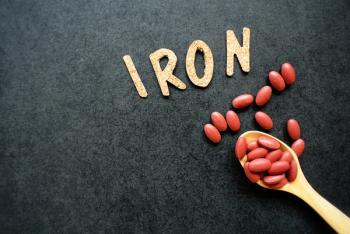
Progesterone and Progesterone Receptor Modulator in Uterine Leiomyoma Growth
The use of levonorgestrel-releasing intrauterine system (LNG-IUS) results in a remarkable decrease in endometrial proliferation and a remarkable increase in apoptosis in the endometrium ; therefore it is effective for long-term management of menorrhagic women with uterine myomas because of the striking reduction in menorrhagia.
The use of levonorgestrel-releasing intrauterine system (LNG-IUS) results in a remarkable decrease in endometrial proliferation and a remarkable increase in apoptosis in the endometrium ; therefore it is effective for long-term management of menorrhagic women with uterine myomas because of the striking reduction in menorrhagia. Although no significant differences in myoma volume assessed by MRI examination were noted between pretreatment and 12 months of use of LNG-IUS, the determination of myoma volume during the LNG-IUS use showed an increase, no change and decrease in each one third of cases examined(1-4). This prompted us to characterize the effects of progesterone (P4) and progesterone receptor modulator (PRM) CDB2914 on uterine myoma growth.
Uterine leiomyomas develop during the reproductive years and regress after menopause, indicating ovarian steroids-dependent growth potential. Although the clinical and biochemical observations have traditionally supported an important role for estrogen in the promotion of leiomyoma growth, there is also increasing evidence to suggest the involvement of P4 in the pathogenesis of leiomyoma. In this context, several growth factors have been demonstrated to play a vital role in leiomyoma cell growth, including EGF and IGF- I which stimulate cell proliferation and inhibit apoptosis of leiomyoma cells(5). It becomes clear that a cross talk between sex steroid hormones, growth factors and apoptosis-related factors exists in the regulation of uterine myoma growth. Thus, much attention has been paid to characterize the molecular mechanisms of sex steroidal regulation of leiomyoma growth and apoptosis by evaluating the effects of P4 and 17β-estradiol (E2) on the expression of growth factors and apoptosis-related factors.
In vitro studies with cultured uterine leiomyoma cells and normal myometrial cells revealed that P4 stimulated the proliferative activity in leiomyoma cells, but not in normal myometrial cells. P4 increased EGF expression in leiomyoma cells, whereas E2 augmented EGF-R expression in leiomyoma cells, indicating that P4 and E2 act in combination to stimulate leiomyoma cell growth(6). P4 also increased Bcl-2 expression and decreased TNF-α expression in those cells(7, 8). Unlike the EGF expression, IGF-I expression in t leiomyoma cells was inhibited by P4. These results suggest that P4 has dual actions on leiomyoma growth; one is to stimulate the growth through up-regulating EGF and Bcl-2 expression, and the other is to inhibit the growth through down-regulating IGF-I expression in the cells. It seems likely that P4 may have dual actions, stimulatory and inhibitory, on leiomyoma cell growth and survival, depending on the local growth factor conditions around each leiomyoma(9-11). This may explain why the size of uterine leiomyomas during the use of LNG-IUS increases in some, but decreases in other instances. This may also explain why the size of leiomyomas during pregnancy does not increase despite the overwhelming increase in circulating concentrations of sex steroid hormones.
By contrast, a novel progesterone receptor modulator CDB2914 which binds competitively to progesterone receptor with high affinity inhibited proliferation and stimulated apoptosis of cultured leiomyoma cells without affecting cultured normal myometrial cells(12). Furthermore, CDB2914 inhibited VEGF and adrenomedullin expression in cultured leiomyoma cells, but not in cultured normal myometrial cells(13). Since VEGF and adrenomedullin are involved in the angiogenesis and vascular network in uterine myomas, the cell-type specific action of CDB2914 on leiomyoma cells without affecting the surrounding normal myometrial cells is meaningful for understanding the usefulness of CDB2914 in the medical treatment of uterine myomas.
Newsletter
Get the latest clinical updates, case studies, and expert commentary in obstetric and gynecologic care. Sign up now to stay informed.









